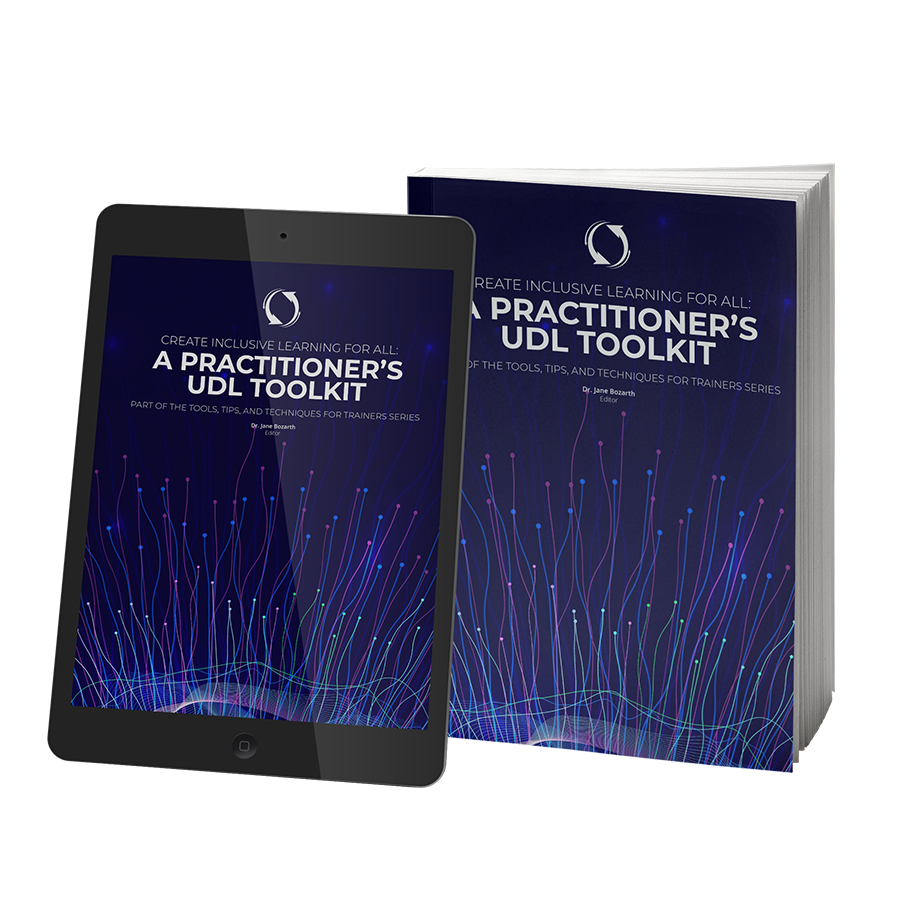1 min read
Virtual First - A Lasting Outcome of the 2020 Pandemic
Welcome to 2021. It seems that everyone is taking a collective breath as we look forward with expectation of promise and insight in a new workplace...
3 min read
 Jennifer Hofmann
:
Jan 21, 2021 2:15:00 PM
Jennifer Hofmann
:
Jan 21, 2021 2:15:00 PM
.png)
.png?width=250&name=01212021%20Blog%20-%20Throw%20it%20in%20Zoom%20and%20See%20if%20it%20Sticks%20Part%201%20(1.1).png) 2020 was a year that witnessed a myriad of changes in the workplace, society, and how we interact, work, play, and…live. In the world of learning and development, perhaps now it’s time to catch our collective breath, and review what we’ve done. 2020 was a year when members of the learning and development community (YOU!) were leaned on heavily to re-purpose, re-develop, and sustain professional development of the workforce in the pandemic.
2020 was a year that witnessed a myriad of changes in the workplace, society, and how we interact, work, play, and…live. In the world of learning and development, perhaps now it’s time to catch our collective breath, and review what we’ve done. 2020 was a year when members of the learning and development community (YOU!) were leaned on heavily to re-purpose, re-develop, and sustain professional development of the workforce in the pandemic.
The Good News - the learning objectives stayed the same. The Bad News - everything else DID change – the learning environment, the instructional team, the learners, etc. – you got asked to transition your training live online to learners battling distractions, worries about their health, kids taking their VoIP headsets, and the rest. You did it - in Zoom, MS Teams, Adobe, Bluejeans, Google Meet, and the rest - with very few stumbles along the way. Congratulations! Pat yourself on the back. Take some time to recognize what you accomplished.
All done feeling the positive vibe? Time to move on, because now that you have proven it can be done, you’ve set the expectation that four-day online programs taught on live video is the standard. These expectations aren’t going away – as a matter of fact, they are going to come up more often as virtual classroom adoption is cemented in our work practices. It’s going to be “Virtual First” moving forward. I can say with some surety that a three-day per diem laden trip to Orlando, Munich, or Dubai for Change Management Training is probably a thing of the past, now that bean-counters know the training can be delivered while the learners remain in their respective offices. In fact, the pandemic simply accelerated a trend that was happening already – so your best bet is to develop/adopt practices that address your organization's business goals while ensuring maximum environmental engagement and learner outcome.
This post is part 1 of a longer discussion – it stresses the importance of strong design for virtual delivery, and how to achieve it. (Part 2 of this discussion addresses the challenges you’ll encounter when proposing these design approaches to your stakeholders.)
Part 1 - Enough with the 8-Hour Virtual Sessions, Already. Zoom Fatigue is a real thing. While everyone was stepping up and forcing their own participation in extended virtual live training sessions in 2020, as we move forward into a presumably post-pandemic age, that willingness will likely disappear. In my last post, I anticipated that 2021 might be the year of “Zoom Attrition", where we will just exhaust our learners (and facilitators) into leaving. Conversations about how to “fix” Zoom Fatigue are actually better characterized as evolving expectations of your organization around training generally. Given that virtual live is here to stay, setting some foundational practices around design and delivery should be a primary focus of this quarter. Your challenge is to anticipate what organizational L&D mandate is on the horizon and treat it in advance to address BOTH the learners’ and the organization's collective needs. To meet this challenge, I propose a simple three-step process the next time you’re discussing an implementation in a virtual live environment:
Step 1: Determine what needs to be taught – this is a good time to review the content and objectives to make sure they’re still accurate and directly relevant to the desired learner outcome (and organizational goal). A good place to start is to either ask someone who has taught the content recently or review a recent delivery – look for materials skipped over or vary wildly from the time estimates in the instructional guide.
Step 2: Redesign for Optimal Delivery – This step doesn’t have to be a revolutionary change, but rather a decision about what content gets deleted, what gets added, what gets turned into microlearning or learner tools, and what actually gets delivered live. With that in hand, break the delivery up in meaningful sessions of 2-3 hours in length. I know, I know – such an approach may extend the “footprint” of the training from one day to 3 or 4 days, but this tried-and-true rule (InSync was been articulating this as a design principle for live online learning since 1999) will all but eliminate Zoom Fatigue, as long as the content is well-implemented (i.e. not someone reading PowerPoint at the learners).
Step 3: Deliver and Evaluate – Set some evaluation criteria (time to train, affective response, assessment data (if any), programmatic measures, learner artifacts) to promote adoption of this design approach post-delivery.
Example: A one-day in-classroom course on Project Management – Planning.
Approach:
1. Time to Train: the 8 hours originally scheduled is likely (at best) 5-6 hours - one hour for lunch, breaks, etc. means that the
training "footprint" measured correctly is reduced.
2. Format: Realize the two-hour blocks are likely easier to fit in both a fully remote and hybrid audience than 8 hours at once.
Ask a question about this in your post-delivery questionnaire.
3. Treatment: After the discussion around planning into a facilitated use of a job aid, wherein the learners leave with a job aid,
and practice using it to gain experience. Measure the job aid's use and download statistics as evidence that the learners
are using and applying the training in their job.
4. Affective Response: Design the delivery to require interaction regularly (every 3-5 minutes) to keep the learner in the learning
experience, rather than letting them check out.
Using such an approach demonstrates to the organization a directed approach that realizes a better outcome than the 8-hour alternative.
Part 2 of this discussion will address the challenges you’ll likely encounter when negotiating designs with your stakeholders.

1 min read
Welcome to 2021. It seems that everyone is taking a collective breath as we look forward with expectation of promise and insight in a new workplace...

The pandemic, among many of its impacts on the learning and development community, mandated a rapid shift to virtual live learning. The past year’s...

How do we ensure learning is inclusive and accessible for everyone? That question is at the heart of our latest resource,Create Inclusive Learning...